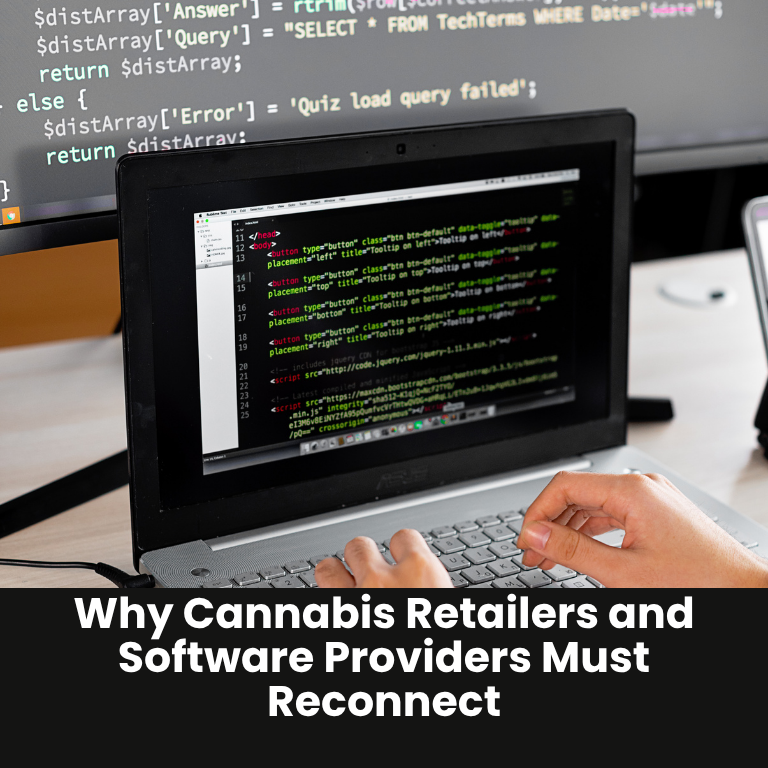Cannabis Operators Must Rebuild Trust With Software Providers to Thrive in 2025
In the high-stakes environment of legal cannabis, businesses are expected to operate at the intersection of relentless regulation, shrinking margins, and fierce competition. Navigating this space demands agility, precision, and often, rapid adaptation to new compliance frameworks or market shifts. But there’s a critical issue surfacing across the industry—one that doesn’t stem from regulators or rivals. It’s the growing disconnect between cannabis operators and their software providers.
For many cannabis businesses, technology is perceived as a barrier rather than a bridge to success. The narrative of “the software is broken” has become all too common. But this mindset may be holding companies back from unlocking their full potential.
Software Isn’t the Enemy, It’s the Opportunity
In a sector where every decision impacts compliance, profitability, and customer experience, software should be seen not as a burden but as a competitive advantage. A modern cannabis tech stack, if used intentionally, can offer immense value: automating compliance workflows, tracking inventory with accuracy, personalizing customer engagement, and producing actionable data insights to guide business strategy.
Unfortunately, many operators fail to tap into this potential. The most common issue? Treating software implementation like a checklist item rather than a strategic initiative.
Point-of-sale systems, inventory trackers, loyalty programs, and digital menus are often chosen based on industry buzz or perceived convenience. But defaulting to what’s popular or what worked “for someone else” ignores the nuanced needs of your specific business model.
Understanding Your Software Tools: A Must, Not a Maybe
One of the most widespread mistakes among operators is failing to truly understand the tools they’ve deployed. Without this understanding, teams are often underutilizing features, misconfiguring settings, or ignoring valuable data that could improve performance. This leads to inefficiencies, errors, and eventually frustration.
When something breaks or fails to deliver expected results, the natural reaction is to blame the software vendor. But before pointing fingers, it’s worth asking key internal questions:
- Was the system implemented correctly?
- Are team members trained on all its features?
- Have we fully explored available integrations?
- Are we using the software as it was intended?
The honest answers to these questions often reveal that the issue lies not in the software itself, but in how it’s being used.
The All-in-One Trap: Jack of All, Master of None
The cannabis industry is uniquely drawn to the idea of the “all-in-one” platform—a tool that handles seed-to-sale tracking, e-commerce, marketing, compliance, HR, and more. The appeal is clear: one login, one dashboard, one vendor to manage. But the reality rarely lives up to expectations.
All-in-one systems, by their nature, offer breadth but not necessarily depth. Many of these platforms attempt to cover the full scope of business operations but deliver only average results in each area. In sectors like cannabis, where precision in compliance and customer data matters, “average” doesn’t cut it.
The better approach one that’s being increasingly adopted by forward-thinking operators is modularity. Instead of relying on a one-size-fits-all solution, businesses are curating their own technology stacks. They’re choosing specialized tools for specific functions and integrating them using middleware, APIs, or platforms that ensure smooth data flow.
This strategy mirrors what’s already common in more mature industries. It’s a model that allows cannabis businesses to stay agile, adopt innovations faster, and tailor their tools to match their exact business needs.
No Perfect Platform, Only Evolving Ones
It’s important for cannabis companies to drop the idea that there’s a “perfect” software solution. Every platform comes with trade-offs whether it’s limited features, a clunky interface, or the occasional bug. But these limitations should be a call to engagement, not disengagement.
Successful operators know that software isn’t something you set and forget. It’s something you actively manage, improve, and adapt alongside your business. This could mean revisiting your configurations, upgrading your training, or even switching platforms when the current one no longer serves your needs.
The key is to take ownership. Instead of simply submitting a support ticket and waiting, engage with your vendor. Collaborate. Ask for training. Provide feedback. Many platforms are eager to co-develop solutions that better support their customers but they need that dialogue to make improvements that matter.
The Software Vendor Relationship Is a Two-Way Street
Much like any vendor client relationship, your connection with a software provider should be built on mutual accountability and shared goals. If your team isn’t invested in making the software work, the platform won’t deliver the ROI you expect.
This relationship requires trust, regular communication, and a willingness to evolve together. Providers are also adjusting to the fast-changing cannabis landscape, from new compliance rules to changing consumer preferences. Building a partnership with your vendor means you can adapt together, rather than falling behind.
Too often, businesses ghost their providers after onboarding. This creates gaps in support, missed updates, and a general lack of alignment between the tool and the business it’s supposed to support.
Your Tech Stack Is a Strategic Advantage, If You Let It Be
Technology is not a silver bullet. But it is a force multiplier. When used correctly, it can make a small team operate like a big one. It can make compliance automatic, inventory accurate, and marketing personalized. And perhaps most importantly, it can give cannabis businesses the edge they need to survive and grow in an increasingly saturated market.
Consider your cannabis software stack as a living part of your operation. Just like you invest time in refining your SOPs or training your budtenders, you need to regularly evaluate, upgrade, and refine your technology tools.
This includes:
- Annual tech audits to evaluate performance, integration, and feature utilization.
- Training programs to ensure your team is confident using your platforms.
- Vendor reviews to assess whether your current provider is still the best fit.
- Feedback loops with your software partners to suggest new features or workflows.
Rebuilding the Relationship With Cannabis Tech Providers
It’s time for cannabis operators to stop treating software vendors as a necessary evil and start seeing them as true business partners. The tools you choose and how you use them will be among the most important decisions your company makes in 2025.
Stop blaming software for inefficiencies. Start asking whether you’re leveraging it to its full potential.
Because the most successful cannabis businesses of the future will be those who master not just cultivation or retail but the systems that support every part of that operation.
So let’s move past the frustration. Let’s stop looking for a perfect, plug-and-play solution. Let’s invest in partnerships, in education, and in building a cannabis tech stack that works as hard as you do.
The future of this industry depends on it.
OG source














